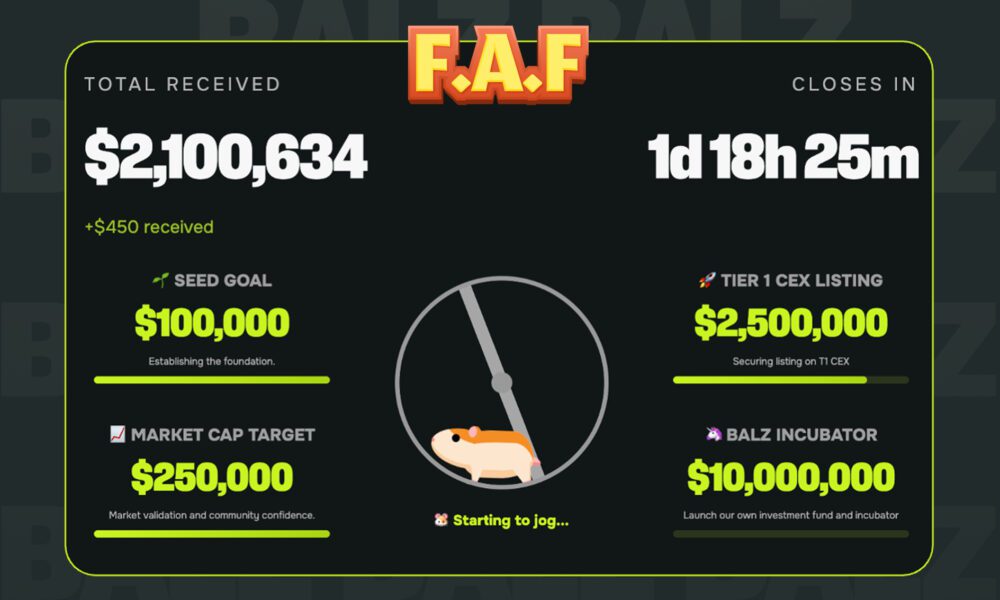A 26-year-old software engineer in Pune opens her first Demat account. She watches three YouTube videos on fundamental analysis, reads a few Reddit threads, and buys her first stock. Within six months, she’s down 18%. She’s one of millions learning the hard way.
India’s demat accounts reached 185 million in 2024, adding 46 million new investors in just one year, an average of 3.8 million accounts per month. That’s nearly the entire population of Spain entering the stock market in twelve months.
But here’s what the numbers don’t show: most of these investors are learning as they go, making costly mistakes that structured education could prevent. The question isn’t whether Indians are investing anymore, it’s whether they’re learning fast enough to survive what comes next.
India’s Retail Investing Explosion: The Numbers Tell a Story
The rise of retail investing in India is unlike anything we’ve seen before. From 39.3 million demat accounts in 2019 to 185 million by the end of 2024, that’s a more than fourfold increase in just five years.
According to SBI Research, India has been adding at least 30 million new demat accounts annually since 2021, with 2024 marking a 33% increase over 2023.
The shift isn’t just in scale, it’s in who’s participating. Nearly 70% of new accounts belong to investors under 35, many from Tier 2 and Tier 3 cities that barely appeared in market participation data before 2020. Women now represent nearly 25% of all investors, one in four, up from a negligible presence just five years ago. In states like Delhi (29.8%), Maharashtra (27.7%), and Tamil Nadu (27.5%), female representation exceeds the national average.
Discount brokers like Zerodha, Groww, and Upstox have made stock market access as simple as downloading an app. Zero brokerage, easy KYC, and mobile-first experiences turned investing from a privilege into a daily habit.
The NSE market capitalisation expanded over six times to ₹441 lakh crore by FY25 compared to FY14, while funds mobilised by Indian companies from capital markets increased more than 10-fold from ₹12,068 crore in FY14 to ₹1.67 lakh crore in 2024.
But access and understanding aren’t the same thing.
The Problem: Access Without Understanding
India’s financial literacy rates tell a different story from the demat account numbers. According to the Reserve Bank of India’s 2023 survey, financial literacy in India stands at 62.6%based on knowledge, behaviour, and attitude, but this masks deeper problems. When measured on a scale of 21 points across financial knowledge, the average score for both urban and rural populations was just 11.7. That’s barely above the halfway mark.
More concerning, only 27% of Indian adults are considered fully financially literate according to the National Centre for Financial Education (NCFE), far below the 52% average in advanced economies. The situation is even worse for students, just 16.7% have a basic understanding of financial and money management concepts. India’s ranking in global financial literacy surveys consistently places it in the bottom half, with only 35% of the population demonstrating basic financial knowledge compared to 50.4% in Brazil or 47.8% in Mexico.
What Mistakes Do Most New Indian Investors Make?
The behavioural patterns are predictable. New investors typically fall into five critical traps:
According to the World Economic Forum’s Global Retail Investor Outlook Survey, 51% of Indian individuals report struggling to meet their debts and liabilities, far exceeding the global average of 32%. They treat stop-losses as optional and diversification as something that reduces returns. Most fail to differentiate between trading and investing, or between speculation and analysis.
Traditional finance education hasn’t reached this new investor base. College curricula focus on corporate finance theory, not personal portfolio management. Most investors learn through trial, error, and social media, an expensive and inefficient education model. The cost isn’t just financial. It’s the confidence lost after avoidable mistakes, the years wasted on strategies that never had a chance of working.
But something is changing in how investors approach learning.
How Learning Is Evolving: From Theory to Practice
The shift isn’t just in who’s investing, it’s in how they’re learning to invest. YouTube finance channels have exploded, with creators breaking down balance sheets, technical patterns, and portfolio strategies in 15-minute videos. Telegram groups and Discord servers have become learning communities where investors share research, debate stock picks, and collectively analyse companies. The format isn’t formal education, it’s peer-to-peer knowledge transfer at scale.
What’s driving this shift? Speed and clarity. New investors don’t have the patience for 300-page investing textbooks or academic papers on efficient market hypothesis.
They want answers to specific questions:
The learning format that wins is the one that delivers actionable insights quickly, visually, and practically.
Visual learning has become the default. Infographics explaining option strategies get more engagement than text explanations. Video breakdowns of quarterly results reach more people than written analyses. Charts, frameworks, and step-by-step guides perform better than theory-heavy content because they bridge the gap between knowing and doing.
This is why visual finance books have gained significant traction among new investors. These resources translate complex concepts like portfolio allocation, risk management, and valuation into visual formats that make abstract ideas concrete. When you can see a diversified portfolio structure in a single infographic rather than reading through dense paragraphs, the learning sticks. With thousands of investors now choosing visual learning materials, the message is clear: today’s market participants want education that’s immediately applicable, not eventually understandable.
The question becomes: Does this new approach to learning actually improve outcomes?
What Actually Works: The Research Behind Successful Investing
The data on investor education and performance is compelling. Research from the OECD’s 2023 International Survey of Adult Financial Literacy shows that, on average across 39 participating countries, only 34% of adults reach the minimum target score on financial literacy (at least 70 points out of 100). Among OECD countries, the figure is slightly better at 39%, but the gap remains significant.
The difference isn’t just about avoiding mistakes, it’s about systematic decision-making. According to global studies on financial literacy impacts, educated investors are 20-30% more likely to diversify their portfolios and significantly less likely to engage in panic selling during market corrections. They calculate intrinsic value before buying, set position sizes based on risk tolerance, and rebalance portfolios based on allocation targets rather than emotions.
These frameworks are exactly what a comprehensive stock investing guide teaches the systematic approaches that separate informed decision-making from guesswork. The difference between investors who build wealth and those who just participate often comes down to whether they learned these principles early or spent years discovering them through expensive mistakes.
SEBI’s investor education initiatives have expanded significantly. During World Investor Week 2024 (October 14-20), SEBI conducted 43,826 awareness programs across India, including regional seminars, workshops, and educational initiatives. The regulator maintains a dedicated investor website and operates a toll-free helpline (1800 22 7575) available in multiple languages. SEBI found that investors who completed structured learning programs showed better risk management and longer holding periods compared to those who didn’t.
The risk management data is impressive. The RBI’s Financial Inclusion Index was 64.2 as of March 2024 (up from 60.1 in March 2023), showing improved access, but having access without literacy makes individuals vulnerable. India’s financial literacy initiatives, detailed in the National Strategy for Financial Education 2020-2025, focus on the ‘5 C’ approach: content, capacity, community-led model, communication, and collaboration.
What separates investors who build wealth from those who just participate? It’s not intelligence or luck, it’s the systematic use of proven principles. That requires learning, and the right type of learning matters.
India’s Next Financial Revolution
India’s investor education landscape is starting to keep up with market participation. Fintech companies are teaming up with educational platforms to integrate learning into trading apps. Regulatory bodies like SEBI and NSE are increasing investor awareness programs, reaching tier 2 and tier 3 cities with local language content and easy-to-understand formats.
The RBI has set up Financial Literacy Centres (FLCs) across the country. Meanwhile, the National Centre for Financial Education (NCFE), created in 2013 by the RBI, SEBI, IRDAI, and PFRDA, promotes financial education through workshops, seminars, and campaigns.
The next evolution will be personalised learning paths. Not everyone needs the same education. A salaried professional building long-term wealth needs different frameworks than someone interested in derivatives trading. The platforms that win will be the ones that match learning content to investor goals, experience levels, and learning preferences. Generic one-size-fits-all education is giving way to adaptive, context-aware learning.
There is a growing understanding that investor education is not just a luxury; it is essential for market stability. When millions of new investors lack basic financial knowledge, markets become more unstable, bubbles grow faster, and corrections affect more people. Countries like the US and UK learned this lesson over many years. India has the chance to create better investor education systems now, before costly market cycles teach hard lessons.
Successful investors understand this: market access is available to everyone, but market wisdom needs to be earned. The tools are there. The information is easy to find. The education is available. What sets apart those who build lasting wealth from those who just participate in market cycles is the choice to learn in a systematic way rather than simply reacting.
The Real Revolution Isn’t Just Participation, It’s Understanding
India’s 185 million investors symbolize more than market growth. They represent a generation taking control of their financial future, learning to manage money, allocate capital, and build wealth beyond traditional savings. That’s transformative in itself.
But true transformation won’t come from how many people open Demat accounts. It’ll come from how many of them truly understand what they’re doing.
Markets reward knowledge over time. The investor who understands valuation, risk management, and portfolio building will always outlast the one who’s just chasing momentum. Education isn’t what separates good years from bad years; it’s what separates good decades from bad decades.
India’s next financial revolution won’t be measured by demat account numbers or trading volumes. It’ll be measured by how many of these 185 million investors are still actively building wealth ten years from now, not because they got lucky, but because they learned to do it right. Educational platforms likeZebraLearn are helping bridge this gap by making financial concepts accessible through visual, structured learning, turning complexity into clarity, one lesson at a time.
Every market cycle creates two types of investors: those who got lucky and wonder why it stopped working, and those who learned systematically and know exactly what to do next.
India’s 185 million investors are shaping their financial future right now, not with the stocks they choose, but with the education they select. Ten years from now, the gap between these two groups won’t be visible in account balances. It’ll be visible in confidence, consistency, and the ability to grow wealth regardless of market conditions. That gap starts with a single decision: learn on purpose, or leave it to chance.



































